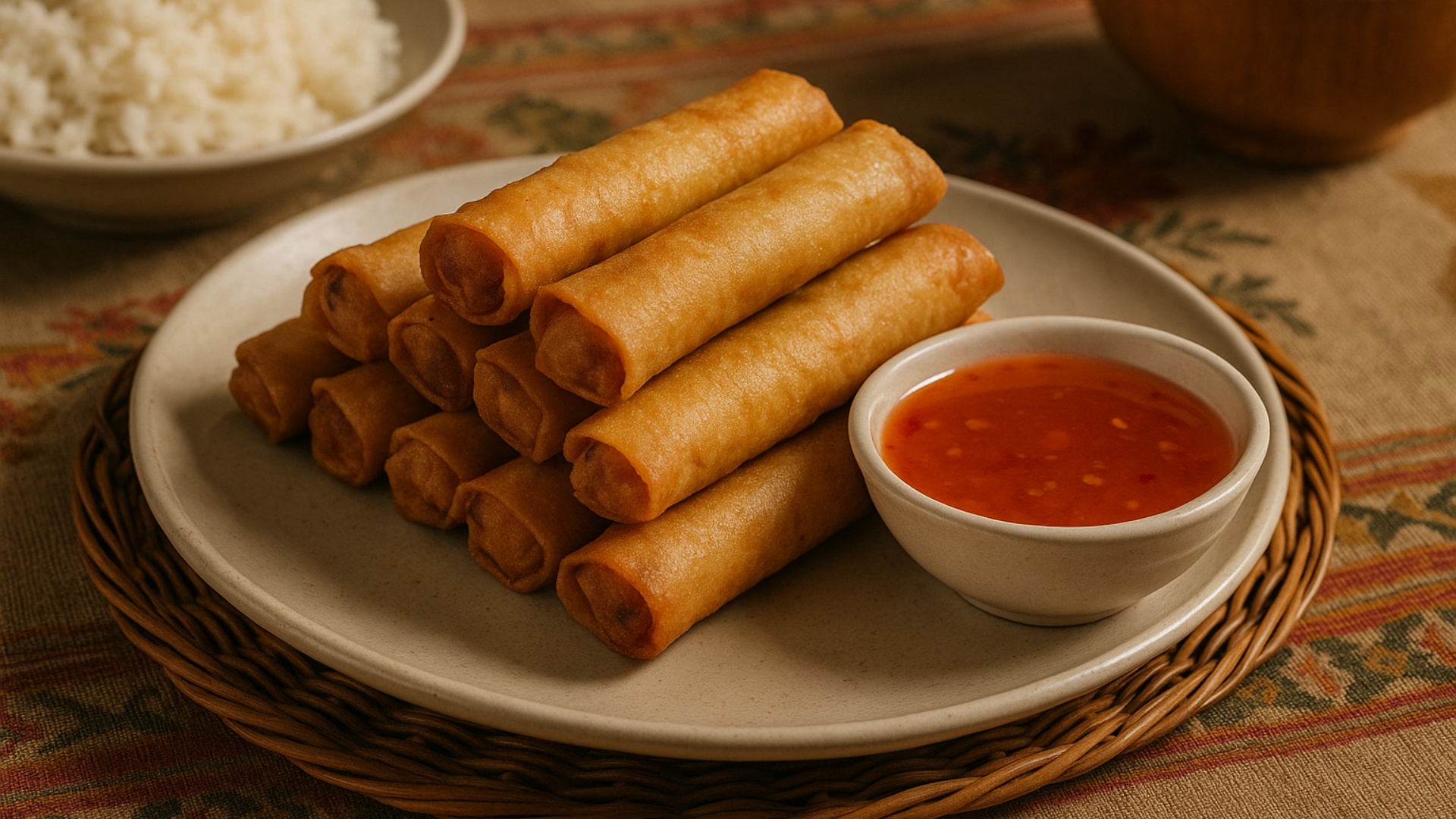
There are dishes that quietly support a meal, and then there’s Lumpiang Shanghai. It doesn’t wait for a grand introduction. It’s the crunchy little favorite that steals the show every single time. Before the spaghetti is touched or the rice is scooped, someone has already taken three pieces of Lumpia and pretended it was just one.
Golden, savory, and bite-sized, this deep-fried spring roll has earned its place as the ultimate Filipino party food. Whether it’s a birthday, holiday, potluck, or just an excuse to fry something on a Saturday, Lumpiang Shanghai is always a good idea.
Where Did It Come From?
Lumpiang Shanghai traces its roots to Chinese spring rolls, brought to the Philippines through early trade and migration. Over time, Filipinos gave it their own twist. We made it smaller, crispier, and filled it with our own style of ground meat mix. The name sounds like it came from China, but it’s more of a Filipino nickname than a literal label.
Fun fact: despite the name, it has no direct connection to Shanghai. It just sounds catchy and makes it feel extra special.
What’s in a Lumpia Roll?
Classic Lumpiang Shanghai is made with:
- Ground pork, although some use beef or chicken
- Finely chopped garlic and onions
- Grated carrots
- Egg to bind it all
- Salt, pepper, and a bit of soy sauce
- Thin lumpia wrappers, rolled tightly and deep-fried until crispy
It’s a simple mix, but somehow every household makes it differently. Some recipes are savory. Others are a little sweet. Some are packed with garlic. Others sneak in cheese or even raisins. (Yes, really.)
Popular Lumpia Variants You Should Know
1. Lumpiang Gulay
A vegetable-filled version with cabbage, carrots, and mung bean sprouts. It’s often bigger and served with vinegar on the side. Crunchy, satisfying, and slightly more guilt-free.
2. Lumpiang Sariwa
A fresh lumpia with soft crepe-like wrappers and a peanut garlic sauce poured on top. Filled with sautéed veggies, sometimes with pork or shrimp. Light, sweet, and often served cold.
3. Lumpiang Ubod
Made with heart of palm and often served during special occasions. It’s sweet, nutty, and usually wrapped in egg wrappers with a drizzle of sweet sauce.
4. Lumpiang Togue
Filled with mung bean sprouts and sometimes tofu or shrimp. A favorite for street food lovers. Usually dipped in suka with chili and onions.
Why Is It Everyone’s Favorite?
Because it’s crispy, it’s easy to pop into your mouth, it goes with anything, from pancit to rice to ketchup, and because it’s the kind of dish that disappears in seconds.
Lumpiang Shanghai is the go-to food for any celebration. It’s quick to fry, easy to eat, and impossible to stop at one piece. Once you take a bite and hear that crunch, it’s game over.
Fun Facts for Lumpia Lovers
- Most Filipino families make hundreds of lumpia in one go, freezing the extras for future cravings.
- The dipping sauce depends on the person. Some like sweet and sour. Others prefer banana ketchup, vinegar, or even plain ketchup with a little sugar.
- No matter how much you cook, it’s always the first thing to run out at any handaan.
- Rolling lumpia is often a bonding activity. Siblings, titas, and cousins gather around the table, gossiping while stuffing and wrapping rolls for hours.
Lumpiang Shanghai Is a Bite of Joy
Crunchy, flavorful, and made for sharing, Lumpiang Shanghai is more than just a side dish. It’s a celebration staple. It’s comfort food. It’s a crispy reminder that sometimes, the smallest things leave the biggest impact.
So whether you like it extra garlicky, sweet and peppery, or dipped in every sauce on the table, Lumpiang Shanghai will always be there. Ready to be grabbed, devoured, and fought over.
And if you ever bring it to a party? Don’t expect leftovers.
